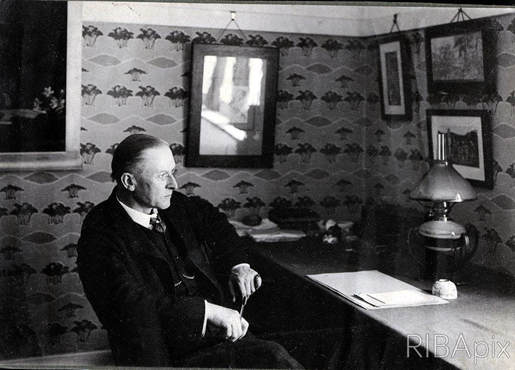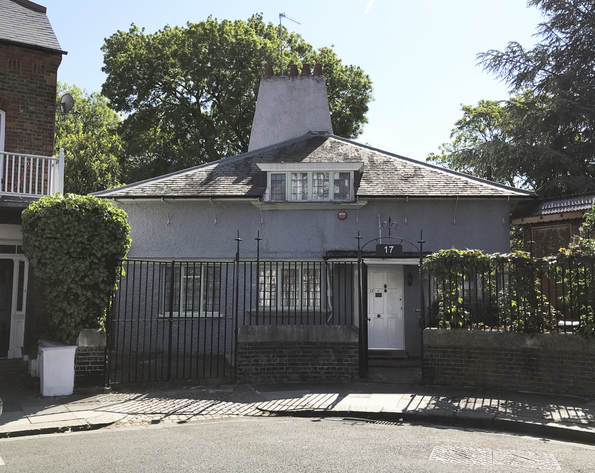|
Charles Francis Annesley Voysey, architect and designer, was born on 28th May 1857. He designed not only houses, but also furniture and textiles as well. His designs combined functionalism with high levels of craft, bridging the link between the Arts & Crafts of William Morris and the coming modern styles of Art Nouveau and eventually Modernism. Although he was praised as a pioneer of Modernism by the likes of Nikolaus Pevsner, Voysey rejected this idea, preferring not to be thought of a part of any group. Voysey was born in Yorkshire but his family moved to London when he was teenager. After leaving education, he trained with architect J.P. Seddon, and eventually set up his own practice in 1881. In his first years in practice, Voysey concentrated on designing furniture and textiles, including producing wallpapers, carpets, tiles, fabrics, ceramics and metalwork. Voysey’s first houses were small cottages and studios, finished in a roughcast render with strong clear cut forms. The best example of this is 14 South Parade, Bedford Park in Ealing for the artist JW Forster from 1891. Its stark white walls and vertical emphasis contrast strongly with the surrounding red brick houses of Richard Shaw. The whole top floor is a studio. The same year Voysey designed another combined studio and house, this time in Hammersmith for painter W.E.F Britten. 17 St Dunstans Road has a more horizontal emphasis than the Bedford Park house, set on just one storey but with the typical roughcast walls, ironwork railings and oversized chimney. Voysey designed over 40 houses, taking care over every detail including the furniture and fittings. One of Voysey’s few non-house buildings is the Sanderson Wallpaper factory in Barley Mow Passage, Chiswick, (now called Voysey House). Designed for Sanderson & Sons wallpaper manufacturers and built in 1901, it combines a concrete barrel vault interior with a white glazed brick exterior, topped by vertical buttresses. Despite his success for over 20 years, after the First World War, work dried up for his practice. Ending up moving in with his son. Critical recognition also came late, with the RIBA Gold Medal coming a year before his death in 1941. However his influence was felt far and wide, with his simplified Arts & Crafts style copied in towns, villages and suburbs all over Britain.
More information on C.F.A. Voysey can be found at the Voysey Society website
1 Comment
|
Archives
May 2024
Categories |





 RSS Feed
RSS Feed